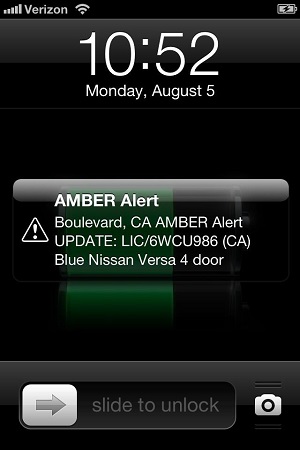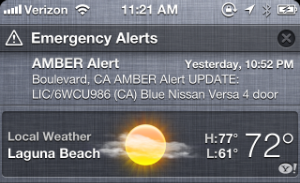Last week, one of my colleagues informed me that the word “tweet” was now included in the Oxford English Dictionary (see “Quiet announcement” at the end of the page.)
The noun and verb tweet (in the social-networking sense) has just been added to the OED. This breaks at least one OED rule, namely that a new word needs to be current for ten years before consideration for inclusion. But it seems to be catching on.
John Simpson
Chief Editor, Oxford English Dictionary
It’s not everyday that a word you helped create gets added to this prestigious publication, so I thought I’d share a bit of the early history of the word “tweet.”
In the early days of Twitter, the service used “twittering” as a verb and “twitter-ers” as a noun. The December 2006 newsletter is a great example of the lingo that was in use back then:
From: "Biz Stone"
Date: Wed, 06 Dec 2006 07:51:31 +1100
Subject: Twitter Now Supports AIM and More
Hello Twitter-ers!
Things are really heating up at Twitter headquarters these days. Last month, the number of Twitter users doubled and it looks like it's going to double again before we run out of December. We thought the best way to react to all this positive activity would be to keep on making improvements. So come on by and check out http://twitter.com!
…
That's it for now, Happy Twittering!
Biz Stone and The Twitter Team
http://twitter.com/biz
I started started using Twitter at the beginning of December. Like John Gruber and my colleagues at the Iconfactory, I loved our new “water cooler for the Internet.” I was, however, unhappy with using Twitter via the website or Dashboard widgets.
While taking a shower in the middle of December, an idea struck me: it wouldn’t be hard to hook up Twitter’s new API to the Cocoa networking classes and display a table with tweets. So I dried off and started prototyping: the next day I had the world’s first Twitter client running on my Mac.
A few days later, I checked all my code into our repository and Twitterrific was born:
r174 | craig | 2006-12-20 17:54:11 -0800 (Wed, 20 Dec 2006) | 1 line
Initial import
There was a problem, however.
As I started to implement the user interface, it was clear that nouns and verbs were needed. Menu items with labels like “Post a Twitter Update” were both wordy and boring. And as someone who loves language, using a phrase like “Refresh Twitterings” made the hairs on the back of my neck stand up.
So we started calling them “twits”; more as a placeholder than anything. Using the term in January 2007 felt just as awkward as it does today:
@Dan: my wife was using the Mac when your twit popped up, followed by “there’s a guy named Dan who’s looking for love”. Classic.
(Thanks to Jordan Kay at Twitter for digging that tweet up. Also, the “Dan” is Dan Benjamin—in those early days we hadn’t figured out screen names, and as far as I knew, there was only one Dan on Twitter!)
Luckily, things were about to change. On the 3rd of January, I checked in a temporary application icon. I always check in something crappy as an inspiration for the talented folks I work with:
r215 | craig | 2007-01-03 13:46:11 -0800 (Wed, 03 Jan 2007) | 1 line
Added a temporary application icon. Updated preferences panel (with quit and about info.) Tweaked on window size. Added expanded size to preferences.
Less than 24 hours later, David Lanham sent me something much better.

I couldn’t check it in quickly enough:
r225 | craig | 2007-01-04 13:21:01 -0800 (Thu, 04 Jan 2007) | 2 lines
Added new app icon
We didn’t know it at the time, but this is also the moment when a bird became synonymous with Twitter. Prior to that point in time, Twitter’s only identity was a logotype.
Work was proceeding at a very fast pace during the first week of January 2007. Beta releases were frequent and widely distributed. Fortunately, the folks at Twitter were using our app with its snazzy new bird icon. One of our beta testers was an API engineer named Blaine Cook who sent me the following email:
From: "Blaine Cook" <[REDACTED]>
To: "Craig Hockenberry" <[REDACTED]>
Date: Thu, 11 Jan 2007 18:29:01 -0800
Subject: Twitterific
Hey Craig,
I work on Twitter with Jack, and just wanted to ping you re: Twitterific. First off, great work - I love it, and I think so does everyone else in the office! :-)
Two thoughts; first, how about changing "twit" to "tweet" - the "official noun" is "Twitter Update", but that's boring...?
Second, I'm in the process of building a real (re: flickr-style) authentication API, so that you'll be able to obtain tokens for users without having to store their usernames and passwords. I don't want its pending release to stall your development or release date, since we will continue to support basic auth for existing clients, but would you be interested in beta-testing the api machinations?
Thanks again for Twitterific!
blaine.
(In retrospect, this email is also the first hint that we spelled the app’s name wrong!)
It’s rare to have unanimous agreement when naming things in software, but in this case everyone loved the word “tweet”. I quickly updated both the app and the website:
r263 | craig | 2007-01-12 11:46:22 -0800 (Fri, 12 Jan 2007) | 1 line
Changed "twits" to "tweets". Removed auto launch of Twitterrific web page. Added link to Twitterrific web page in config window.
r2183 | craig | 2007-01-12 11:44:07 -0800 (Fri, 12 Jan 2007) | 1 line
Changed "twits" to "tweets"
And not a moment too soon! We released the first version of Twitterrific just three days later with the following copy on the product website:
About Twitterrific
Twitterrific is a fun little application that lets you both read and publish posts or “tweets” to the Twitter community website. The application’s user interface is clean, concise and designed to take up a minimum of real estate on your Mac’s desktop.
This is the first time “tweet” appeared on the Internet in reference to something you do on Twitter.
Our new app was a hit with users everywhere. We even got a mention in Twitter’s next newsletter:
From: "Biz Stone"
Date: Wed, 17 Jan 2007 07:37:07 +1100
Subject: =Things Are Heating Up At Twitter
Hello Twitter-ers!
…
Continued Hotness: Twitterrific
The folks over at The Icon Factory have created a brilliant little application that lets you both read and post updates to Twitter. The application's user interface is clean, concise and designed to take up a minimum of real estate on your Mac's desktop. Twitter headquarters is sporting this little jobbie on every monitor in the house! Download it for free from The Icon Factory web site.
Twitterrific: http://iconfactory.com/software/twitterrific
…
Things are heating up!
-Biz Stone and The Twitter Team
http://twitter.com/biz
Unfortunately, the work I had done to expunge “twit” from our app was not complete: I had forgotten to remove it from some button tooltips. After the release of version 1.1 on January 25th, “twit” was gone for good.
Even though the use of the word “tweet” spread quickly, Twitter took awhile to embrace the new terminology. Even after several months, “twitter-ers” were still “twittering”.
As far as I know, the first time “tweet” appeared on Twitter’s site was when they referred to our product. (And yes, there was a point in time when the founder of Twitter would send us feature suggestions!)
Almost a year later, “tweet” was used on the company blog (but again, in a quote by a third party).
The word “tweet” didn’t appear unquoted on Twitter’s blog until June of 2008. Coincidentally, it was in reference to the WWDC where we won an Apple Design Award for Twitterrific!
It still feels strange to hear a word I helped create be mentioned over and over again in the media. It’s a great word to go along with a great service, and in the end, I’m just happy we’re not calling each other twits!
Addendum – July 13th, 2013
I dug around through my Twitter archive and came up with some interesting tweets that show how and when the first Twitter client came to be.
The first notion that Twitter didn’t belong solely on the web happened on December 5th, 2006 (a couple of weeks before the first check-in in the Twitterrific repository.) This line of thinking was inspired by a tweet John Gruber had posted about the Dashboard widget he was using:
Less than an hour later, I posted this:
A couple of days later, I started poking around with the new Twitter API:
(Note that in the early days of Twitter, the website was designed around @jack’s original idea of posting status messages. The user name was implied in the post, hence “Craig Hockenberry” “is experimenting”.)
By the 20th of December, I felt confident enough in the state of the project to go public (that’s also the day that the prototype code got checked into the repository):
At the Iconfactory, everyone gets a two week Christmas break. I’d rather code than shop :-)
Unlike many products, we knew the name of what we were building very early on:
And from this point on, I never posted from the website again:
Here’s the first tweet with a source parameter (that tells Twitter which client posted the tweet.) We worked with Twitter engineering to implement this, and for a long time Twitterrific was the only source besides “web”. Note that this happened just two days before the release!
Of course on January 14th, 2007, the release was announced on Twitter:


